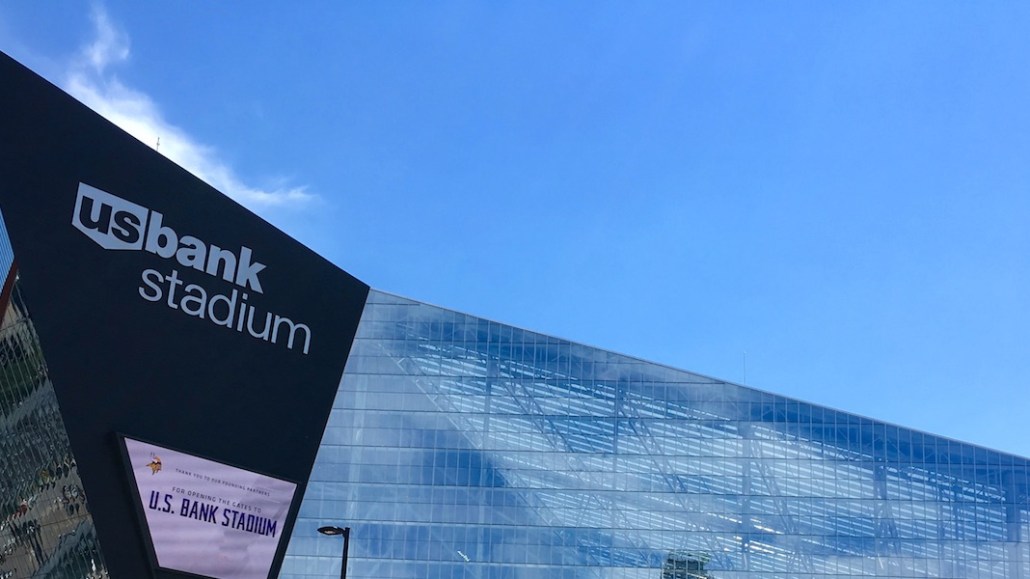
For a company with some money, there’s no better opportunity for exposure than the Super Bowl. Just ask U.S. Bank, whose hometown of Minneapolis will host 125,000 visitors coming for the big game next week.
During the week of the event, it’s going to place ads that will “take over” a light rail station near the stadium, and Super Bowl-branded ATMs will let customers donate to the American Red Cross. It isn’t an official NFL sponsor, but it will be placing TV ads that will run locally during the Super Bowl pregame show, along with sponsored videos on Facebook, Instagram, Twitter and a Snapchat filter. It won’t be running national ads during the game. The bank is in its third year of a 20-year deal that gives it naming rights to the stadium hosting Super Bowl events. It was also a bank lender that helped finance the stadium.
“It’s an opportunity for us to expose existing and future consumers to the brand and tell the story of who we are as a company,” said Chris Lee, head of sponsorships for the Minneapolis-based bank. “This is our crown jewel, having our bank step onto a national platform — it’s an awareness play.”
More in Marketing

What TikTok’s e-commerce launch could mean for marketers and content creators
TikTok has officially launched its new e-commerce platform, TikTok Shop, earlier this month on August 1. Using the new e-commerce platform, brands and creators can sell products directly on the platform, potentially creating new revenue streams, and tap into the short-form video platform’s growing popularity.

‘The influencer industry can be really vile’: Confessions of an influencer marketer on the industry’s unfair hiring practices
While the influencer industry might sound exciting and like it’s full of opportunities, one marketer can vouch for the horrific scenarios that still take place behind the scenes.

Digiday+ Research: Marketers said revenue grew in the last year, with more growth expected ahead
After a tumultuous 12 months, marketers are getting a clear picture of how they really did during a time of true uncertainty. And, as it turns out, it wasn’t all that bad.
Ad position: web_bfu